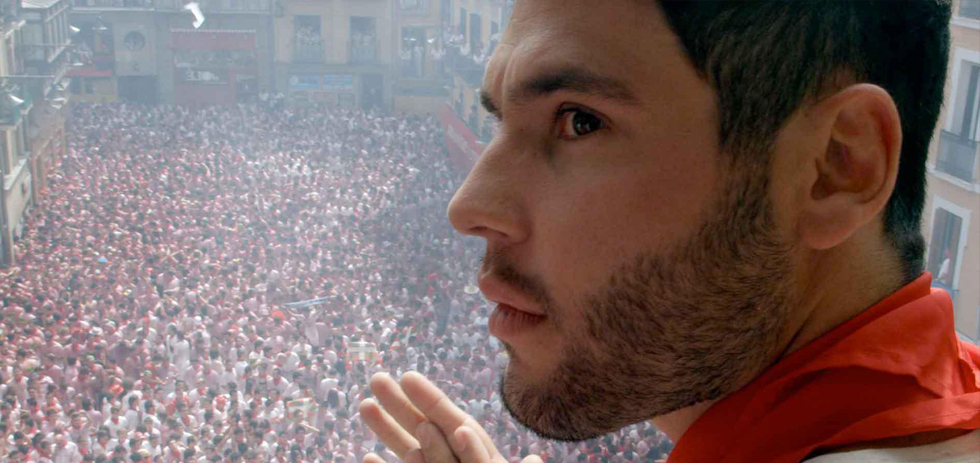
San Fermin, the home of the Running of the Bulls, is Damascus for many a self-seeking traveller. It seems like the perfect place to set an ensemble drama, specifically the hokey kind where several main characters’ lives and cultures intertwine, all caught up in that quest to transcend mundanity and be in the ineffable moment… which invariably involves some dopey thrill like, say, outrunning a cattle stampede. Leave it to Blue Lips to fulfil that potential, though in the most aggravating way imaginable. The only thing stopping it from being a top-to-bottom love letter to the festival is incompetent character drama. For instance, when a group of men chanting and swilling wine is, seemingly as a half-thought, cross-cut with one of the heroines contemplating suicide. Without the context that would frame it in masculinity-critiquing irony, it becomes one of a litany of dysfunctions, and the end result is less grim than that strange image but just as insufferable.
The title is something that happens when drinking glasses of red wine, and it occurs just once towards the end of the movie, so it makes about as much sense as renaming Birdman to Nose Job. Appropriately enough, the narrative leading to it has as much portent as that Iñárritu production, if not more. Its melange of bland character plots centre on a Californian journalist, an Italian videographer, a Spanish hospital patient, a Hawaiian hula dancer, a grieving Pamplona widow and a retired Brazilian soccer player. After preludes shot in each of those respective locations, they all come to Pamplona, some to do creative work like reporting and shooting commercials, others to resolve personal affairs, but figuratively to resolve the part of their “inner selves” that has been “killed”, as the studio’s IMDB summary informs us twice in the one paragraph. This is always a dull variation on that vague and special sort of disconnect, frowned upon by the same Eat Pray Lovers that flock to events like San Fermin in the first place.1 The Californian spends too much time on his phone, the widow won’t part with her husband’s flat, the Hawaiian girl hates her mom, etc. Like the title, it’s fluffy signifiers overreaching for a magic-of-life affirmation.
The best that can be said for the ensuing joint effort between six directors is that it never results in a mess of shooting styles. Despite the country-specific preludes that necessitate three different cinematographers (Matías Nicolás, Robert Christopher Webb and Fernando Young), each of the main characters and their homes inhabit the same aesthetic, so their believable convergence at the party deserves credit. The problem is that the style that unifies them is lacking on two fronts. One, it’s coming from a story that chooses only the broadest notions of personal conflict. Character arcs, bold-faced or broken as they are by the editing jumble, play out in the broadest terms, with inexplicable and unsatisfying turns being waved away earnest performances and acoustic-guitar ditties by Sofía Rodríguez Sanchiz. The lackings here give rises the second failing, which is the notably shoddy production value. There is bad sound recording and ADR in even the simplest conversations, and even post-production elements like overlaid titles announcing each new character’s name have a wan, inferior quality to them. It only turns increasingly cheap and onerous to watch as the stories carry on through to their unearned climaxes.
Like many cosmopolitan globe-trotting fantasies, things only carry an air of transcendence in Blue Lips, and never reach an insight that helps the rest of us. Most damning in all of this is that the producers have made a production diary with a more compelling story than anything found in the film they promote; one about the film-makers’ determination to make good on their Los Angeles college educations from ten years ago. I highly recommend switching on Google Translate and giving those a browse. The language is haggard and hard to follow, but the intent is endearing, and it’s painful that even that can’t be said for the film that they describe.
